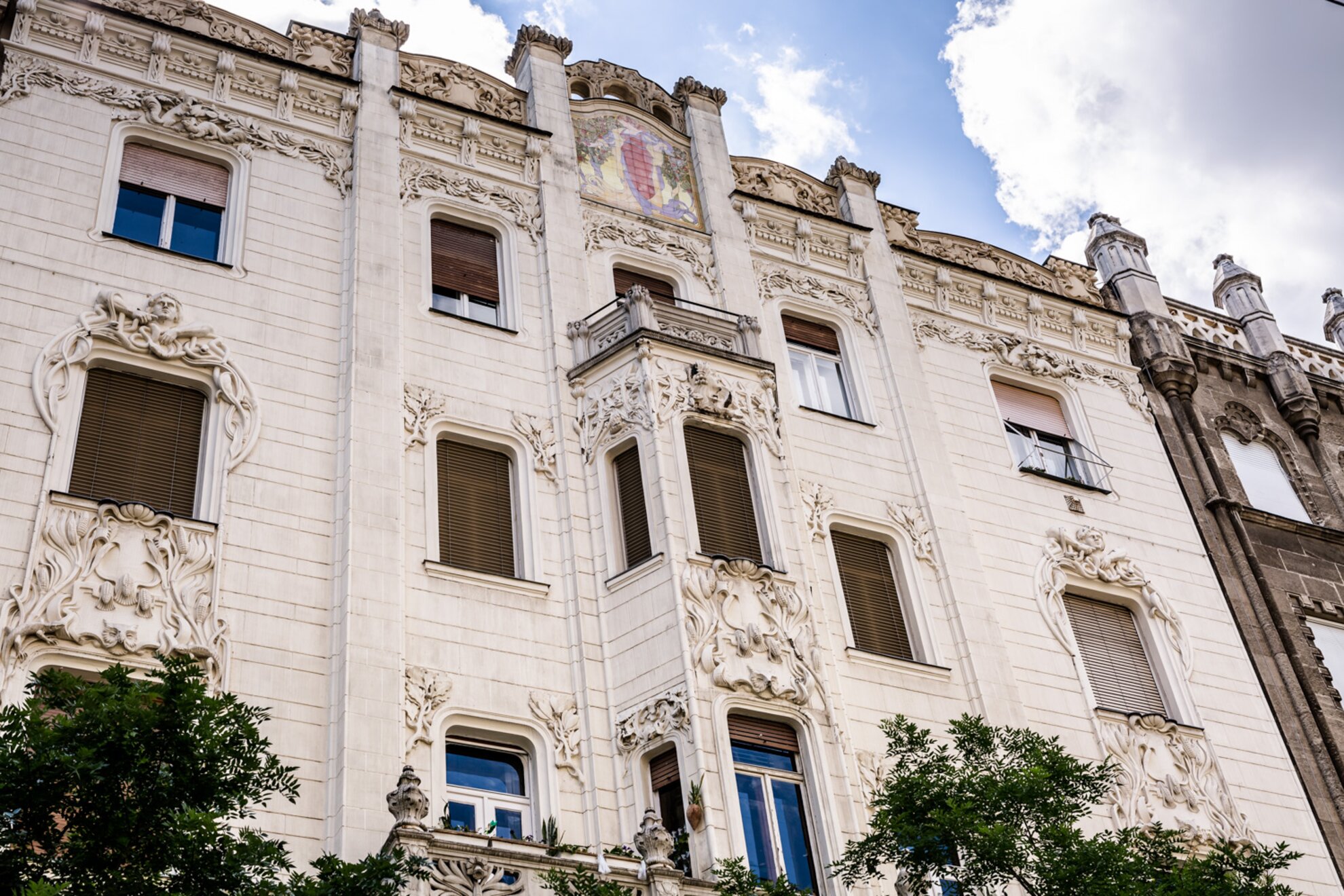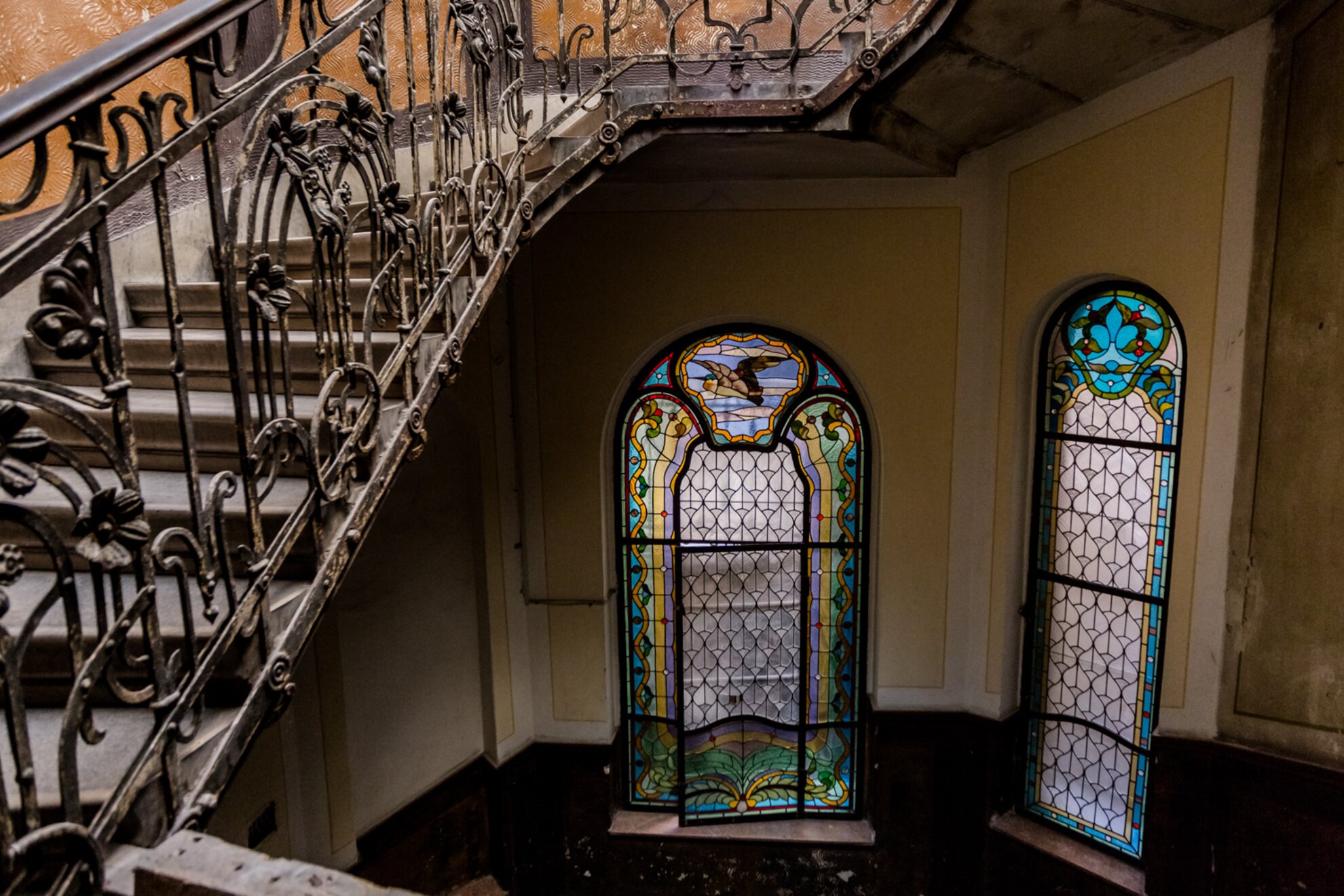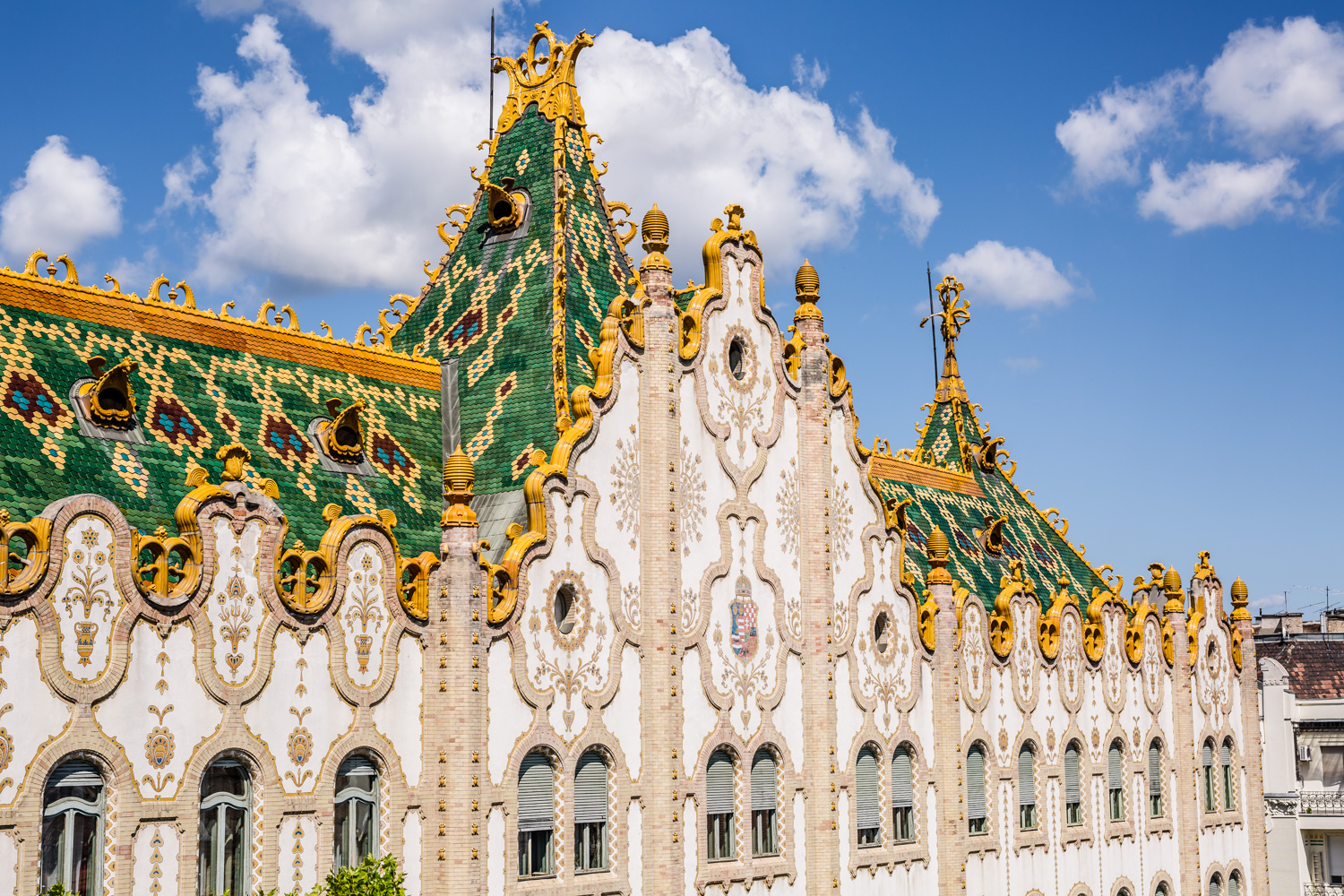The blossoming of Art Nouveau in Budapest can be linked back to the rebuilding of Szabadság Square and its surroundings – where any architectural tour might start. Before the late 19th century, much of this area was occupied by the dreaded Habsburg barracks of the New Building. Once Austrian troops left after the 1867 Compromise that sealed Hungarian union with Vienna, the so-called Hungarian Bastille was demolished, and construction could start anew. Public and private buildings showcase a variety of architectural styles from the end of the 19th and the beginning of the 20th century, from Gothic to Art Nouveau.
1. Walkó House
One of the first Art Nouveau buildings in Budapest. Its architect, Albert Kálmán Kőrössy, designed a rather exciting façade, inspired by nature.

Vines, flower garlands and various animals decorate the building, symbolizing urban longing for nature from the concrete jungle. The squirrel-shaped ornaments may refer to the commissioner, Lajos Walkó, who worked as a banker, as they were a popular decorative motif on many French financial institutions. However, the first thing to catch your eye when glancing up is a work by Géza Maróti: a graceful female figure depicts Éva in the Garden of Eden as she reaches for the forbidden fruit.
Address: Budapest 1054, Aulich Street 3
2. Hungarian State Treasury (former Hungarian Royal Post Office Savings Bank)
Eastern and western architectural styles mix and merge in Budapest, but Hungarian motifs and shapes also became popular towards the end of the 19th century.

The pioneer of this architectural trend was Ödön Lechner, who decorated today’s Hungarian State Treasury with flower motifs from Hungarian folk art, and with the glossy ceramics of the Zsolnay Factory, decorations subtly indicating the function of the building: bees, beehives and dragons guarding treasure. The bull’s head adorning the green and yellow roof is an artistic reformation of one of the early medieval gold vessels of the Treasure of Nagyszentmiklós. The interior remains harmonic with the outer design, with small dragon heads serving as decoration, and also features one of the last paternosters in Budapest.
Address: Budapest 1054, Hold Street 4
3. House of Hungarian Art Nouveau
For a long time, this building was called the Bedő House after its commissioner Béla Bedő, a rich factory and mine owner.

The façade of this pistachio green building was mostly influenced by French and Belgian Art Nouveau, as indicated by the asymmetrical layout and window shapes – although you might notice some Hungarian motifs as well, with sunflower-shaped balcony railings by the Zsolnay Factory. In addition to designing this building, architect Emil Vidor worked on the interior design of the Bedő family apartments. Built in 1907, the house is still the residence of the commissioner’s heirs, also functioning as a museum dedicated to the style, and as the Secessio Café.
Address: Budapest 1054, Honvéd Street 3
Open to visitors: Monday-Saturday, 10am-5pm
4. Szedő House
The three-story apartment house, handed over in 1904, was commissioned by and named after the merchant Gáspár Szedő, and designed by two young architecture graduates, Miklós Román and Béla Málnai.

The entire building, from the basement to the attic, was built in a uniform, floral Art Nouveau style. Elegant, larger flats occupy the street front of the house, while a photography studio was installed in the attic, later used as Málnai’s architectural office. The somber atmosphere of the dimly lit staircase, overlooking a small inner courtyard, is offset by the stained-glass windows designed by Miksa Róth, depicting colorful flowers and graceful birds. The reconstruction of the building began early in the summer of 2017.
Address: Budapest 1065, Hajós Street 32
5. Napoleon Court
Currently concealed by scaffolding, this building houses Budapest’s only statue of Napoleon – although in 1903, architect Gyula Fodor named the impressive, four-story Art Nouveau apartment house, commissioned by Ignác Pollák, after the emperor’s nephew, Louis-Napoléon.

In addition to its unique yet subtle interior decoration, stained-glass windows and patterned cement tiles, the architect was careful to create a pleasant living environment for prospective tenants, and designed a spacious, bright inner courtyard with a circular gangway. The building’s interior was beautifully renovated a few years ago, so once the exterior façade is refurbished, it can finally return to its former glory.
Address: Budapest 1065, Hajós Street 25




